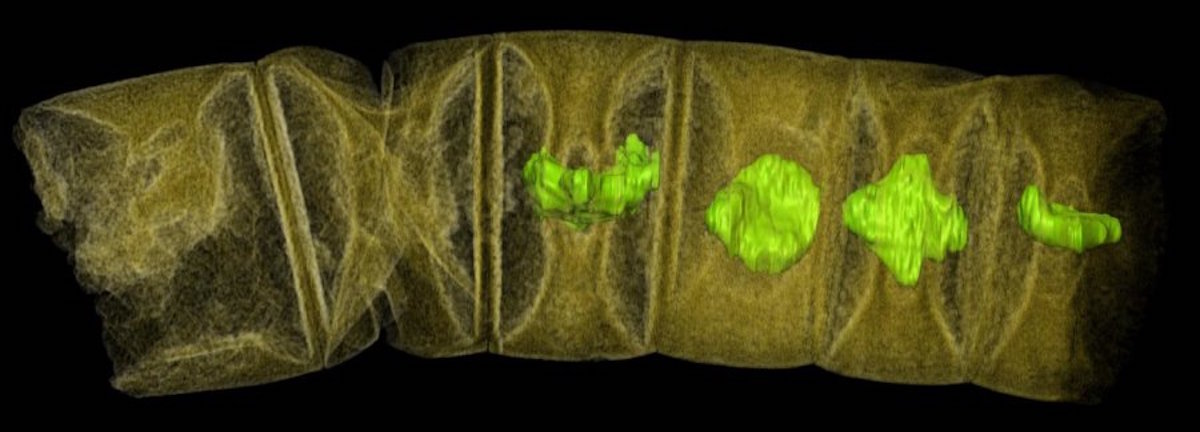 Evolution
Evolution
 Intelligent Design
Intelligent Design
Plant-Like Life Is Pushed Back 400 Million Years

A new fossil discovery from India has pushed the history of plant-like life back 400 million years. Good news for Darwinian theory? Not at all.
In the evolution debate, Darwinists interpret time as being automatically favorable to themselves. That’s strategic, and natural enough in a way. The truth, though, is that when it comes to arguments for design, a long history for life is either a neutral factor, since no known amount of time would suffice.
Or it can be favorable to the case for ID. That’s because often where we find that a major development in biological history is pushed further back, it means a window has narrowed. That means that evolution, to do its work and accomplish a vital feat, had less available to it in the vital resource of time.
Check this out. Science Daily describes “1.6 billion-year-old probable red algae.” This “indicates that advanced multicellular life evolved much earlier than previously thought” (added emphasis). Specifically, getting from no plant-like life to red algae now evidently has 400 million fewer years to work with:
The scientists found two kinds of fossils resembling red algae in uniquely well-preserved sedimentary rocks at Chitrakoot in central India. One type is thread-like, the other one consists of fleshy colonies. The scientists were able to see distinct inner cell structures and so-called cell fountains, the bundles of packed and splaying filaments that form the body of the fleshy forms and are characteristic of red algae.
“You cannot be a hundred per cent sure about material this ancient, as there is no DNA remaining, but the characters agree quite well with the morphology and structure of red algae,” says Stefan Bengtson, Professor emeritus of palaeozoology at the Swedish Museum of Natural History.
The earliest traces of life on Earth are at least 3.5 billion years old. These single-celled organisms, unlike eukaryotes, lack nuclei and other organelles. Large multicellular eukaryotic organisms became common much later, about 600 million years ago, near the transition to the Phanerozoic Era, the “time of visible life.”
Discoveries of early multicellular eukaryotes have been sporadic and difficult to interpret, challenging scientists trying to reconstruct and date the tree of life. The oldest known red algae before the present discovery are 1.2 billion years old. The Indian fossils, 400 million years older and by far the oldest plant-like fossils ever found, suggest that the early branches of the tree of life need to be recalibrated.
“The ‘time of visible life’ seems to have begun much earlier than we thought,” says Stefan Bengtson.
The results are reported in PLOS Biology (“Three-dimensional preservation of cellular and subcellular structures suggests 1.6 billion-year-old crown-group red algae“). The case of plant-like life joins other illustrations.
A classic instance is whale evolution, which the latest research has shaved back to a mere 1 million years. That happened with the discovery of an Antarctic whale jawbone fossil, dated to 49 million years ago. That makes for an “unbearable rush,” we noted last year, and a “challenge to evolution that won’t go away.”
Another case in point is the origin of life itself, dated to some 3.5 billion years ago based on fossil evidence. Recently that frame was pushed back to 3.77 billion years ago, or even as much 4.28 billion years ago. With respect to the formation of the early Earth, it looks even more like “instant life” (in the words of origin-of-life researcher Cyril Ponnamperuma) than was previously thought.
Such abrupt transitions, punctuating long stasis with sudden bursts of creativity, are not what Darwin expected. However, they are what intelligent design expects, based on our own experience of how ordinary human creativity works.
Image: Fossil red algae, by Stefan Bengtson, CCAL via Science Daily.
